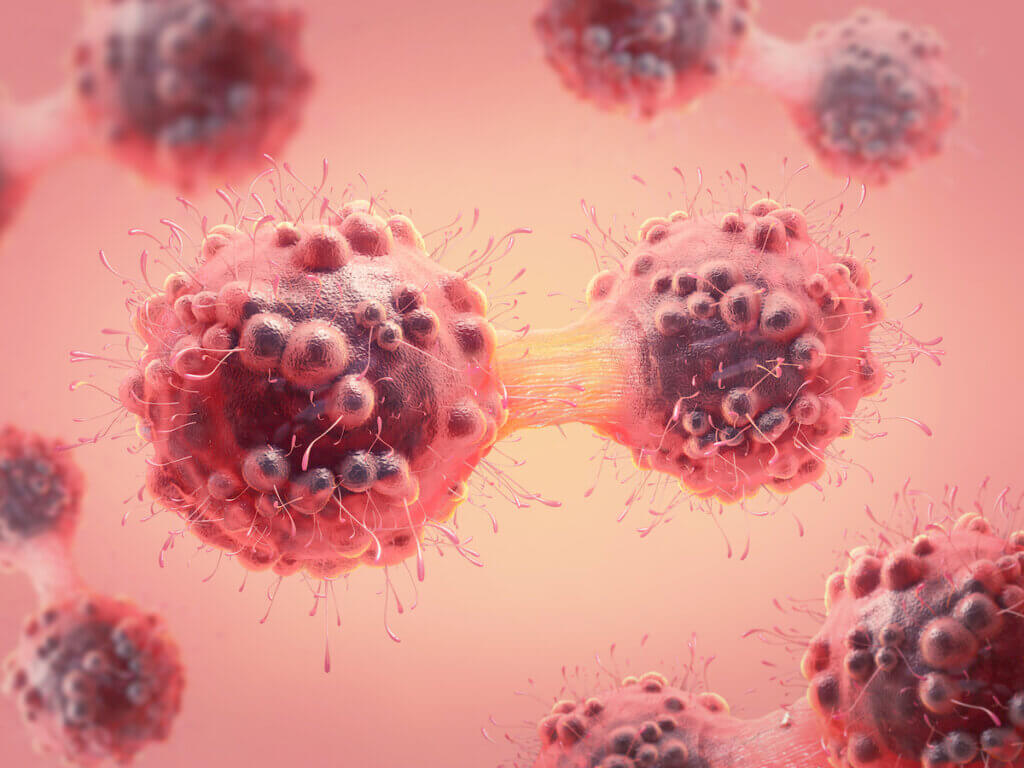Key Takeaways:
- Lactate is not a passive metabolic by-product but instead drives cancer cell growth.
- Interfering with lactate interactions in cancer cells represents a potential new path for novel cancer treatments.
For nearly a century, scientists have appreciated that cancer cells rely on a process called glycolysis to grow and divide at very high rates. In the process, the cells avidly break down glucose to produce lactate, which has been considered a passive by-product — a mechanism known as the Warburg Effect, named after the German biochemist Otto Warburg, who received the 1931 Nobel Prize in Physiology or Medicine for this observation.
But new research from Dana-Farber Cancer Institute shows that lactate is more than an end-product whose only fate is to be secreted into the circulation. Instead, researchers have shown that lactate plays an active part in helping cancer cells grow through binding with a key protein and zinc. This is the first time researchers have shown that lactate has the ability to bind to proteins to regulate their function. Armed with this new information, scientists believe that targeting a simple metabolite like lactate may open up possibilities for new cancer treatments. The research was published in Nature.
For the past five years, Edward Chouchani, PhD, of the Department of Cancer Biology at Dana-Farber, has been developing new techniques to learn which proteins respond directly to sharp rises in lactate, one of the body’s thousands of metabolites. Secondarily, he studies the basic biochemical mechanisms involved.
In the paper, researchers showed that the protein UBE2C responded dramatically to changes in lactate abundance.
“When we studied the entire human proteome under natural conditions, then added lactate, the top shifted protein was UBE2C,” says Chouchani, senior author of the study. “This was especially interesting because UBE2C is famously associated with cell cycle regulation and proliferation.”

Regulating mitosis
UBEC2 is a member of the anaphase promoting complex (APC/C), which is found in every diving cell. The APC/C is required for controlling key regulated steps in cell mitosis — when a cell’s chromosomes pull apart and form a new cell.
Diving deeper into that mechanism, the team discovered that the way lactate caused UBE2C to respond was by binding to the active site of another protein, SENP1, with the help of the metal zinc. Together, the lactate/SENP1/zinc complex opens up the APC/C, allowing UBE2C to bind to it, which is an essential step moving the cell toward cell division.
“We basically found a chain of events through which lactate has a hitherto undiscovered ability to regulate a protein at the core of cell division,” says Chouchani. “It appears to be a key checkpoint step for opening up the APC/C, which only happens when lactate levels rise above certain threshold concentrations.”
The team only observed these threshold concentrations in cancer cells as they were exiting out of growth phase metabolism. At this stage, the cell has created all the components it needs to make a second cell, and then enter mitosis.
“Lactate acts a metabolic checkpoint, rising as the cells prepare to enter mitosis, and then returns to lower levels after the cells divide,” explains Chouchani. “We think it is serving as a physiologic mechanism telling the cells they are ready to divide.”
The authors speculate that the lactate-led mechanism may explain why some cancers fail to respond to anti-cancer microtubule drugs, like nocodazole. Those drugs are designed to prevent microtubule assembly in cancer cells that pull chromosomes apart and drive mitosis.
However, in a state known as mitotic slippage, some cancer cells still find a way around those drugs even though they can’t assemble their microtubules properly. “We find that this lactate mechanism appears to have a role in that process,” says Chouchani.
With this new understanding, the team is pursuing design of new cancer treatments. Knowing that lactate interacts with zinc, the research team is now looking to design small molecules that would prevent zinc from binding onto its SENP1 target in the first place. They are also looking at interventions to lower lactate levels to affect this newfound SENP1 mechanism.
“This research inverts the long-held view of lactate as a passive byproduct of the Warburg Effect, that cancers make tons of lactate as a byproduct of glycolysis fueled cancer growth and proliferation,” says Chouchani. “What we show is the first direct evidence of a mechanism through which lactate isn’t a waste product, but actually regulates cancer cell division.”
